Defeng Sun
Complexity of normalized stochastic first-order methods with momentum under heavy-tailed noise
Jun 12, 2025Abstract:In this paper, we propose practical normalized stochastic first-order methods with Polyak momentum, multi-extrapolated momentum, and recursive momentum for solving unconstrained optimization problems. These methods employ dynamically updated algorithmic parameters and do not require explicit knowledge of problem-dependent quantities such as the Lipschitz constant or noise bound. We establish first-order oracle complexity results for finding approximate stochastic stationary points under heavy-tailed noise and weakly average smoothness conditions -- both of which are weaker than the commonly used bounded variance and mean-squared smoothness assumptions. Our complexity bounds either improve upon or match the best-known results in the literature. Numerical experiments are presented to demonstrate the practical effectiveness of the proposed methods.
Approximation Bounds for Transformer Networks with Application to Regression
Apr 16, 2025Abstract:We explore the approximation capabilities of Transformer networks for H\"older and Sobolev functions, and apply these results to address nonparametric regression estimation with dependent observations. First, we establish novel upper bounds for standard Transformer networks approximating sequence-to-sequence mappings whose component functions are H\"older continuous with smoothness index $\gamma \in (0,1]$. To achieve an approximation error $\varepsilon$ under the $L^p$-norm for $p \in [1, \infty]$, it suffices to use a fixed-depth Transformer network whose total number of parameters scales as $\varepsilon^{-d_x n / \gamma}$. This result not only extends existing findings to include the case $p = \infty$, but also matches the best known upper bounds on number of parameters previously obtained for fixed-depth FNNs and RNNs. Similar bounds are also derived for Sobolev functions. Second, we derive explicit convergence rates for the nonparametric regression problem under various $\beta$-mixing data assumptions, which allow the dependence between observations to weaken over time. Our bounds on the sample complexity impose no constraints on weight magnitudes. Lastly, we propose a novel proof strategy to establish approximation bounds, inspired by the Kolmogorov-Arnold representation theorem. We show that if the self-attention layer in a Transformer can perform column averaging, the network can approximate sequence-to-sequence H\"older functions, offering new insights into the interpretability of self-attention mechanisms.
Distribution Matching for Self-Supervised Transfer Learning
Feb 20, 2025Abstract:In this paper, we propose a novel self-supervised transfer learning method called Distribution Matching (DM), which drives the representation distribution toward a predefined reference distribution while preserving augmentation invariance. The design of DM results in a learned representation space that is intuitively structured and offers easily interpretable hyperparameters. Experimental results across multiple real-world datasets and evaluation metrics demonstrate that DM performs competitively on target classification tasks compared to existing self-supervised transfer learning methods. Additionally, we provide robust theoretical guarantees for DM, including a population theorem and an end-to-end sample theorem. The population theorem bridges the gap between the self-supervised learning task and target classification accuracy, while the sample theorem shows that, even with a limited number of samples from the target domain, DM can deliver exceptional classification performance, provided the unlabeled sample size is sufficiently large.
A Survey on Large Language Model-based Agents for Statistics and Data Science
Dec 18, 2024Abstract:In recent years, data science agents powered by Large Language Models (LLMs), known as "data agents," have shown significant potential to transform the traditional data analysis paradigm. This survey provides an overview of the evolution, capabilities, and applications of LLM-based data agents, highlighting their role in simplifying complex data tasks and lowering the entry barrier for users without related expertise. We explore current trends in the design of LLM-based frameworks, detailing essential features such as planning, reasoning, reflection, multi-agent collaboration, user interface, knowledge integration, and system design, which enable agents to address data-centric problems with minimal human intervention. Furthermore, we analyze several case studies to demonstrate the practical applications of various data agents in real-world scenarios. Finally, we identify key challenges and propose future research directions to advance the development of data agents into intelligent statistical analysis software.
LAMBDA: A Large Model Based Data Agent
Jul 24, 2024Abstract:We introduce ``LAMBDA," a novel open-source, code-free multi-agent data analysis system that that harnesses the power of large models. LAMBDA is designed to address data analysis challenges in complex data-driven applications through the use of innovatively designed data agents that operate iteratively and generatively using natural language. At the core of LAMBDA are two key agent roles: the programmer and the inspector, which are engineered to work together seamlessly. Specifically, the programmer generates code based on the user's instructions and domain-specific knowledge, enhanced by advanced models. Meanwhile, the inspector debugs the code when necessary. To ensure robustness and handle adverse scenarios, LAMBDA features a user interface that allows direct user intervention in the operational loop. Additionally, LAMBDA can flexibly integrate external models and algorithms through our knowledge integration mechanism, catering to the needs of customized data analysis. LAMBDA has demonstrated strong performance on various machine learning datasets. It has the potential to enhance data science practice and analysis paradigm by seamlessly integrating human and artificial intelligence, making it more accessible, effective, and efficient for individuals from diverse backgrounds. The strong performance of LAMBDA in solving data science problems is demonstrated in several case studies, which are presented at \url{https://www.polyu.edu.hk/ama/cmfai/lambda.html}.
Machine Learning Insides OptVerse AI Solver: Design Principles and Applications
Jan 17, 2024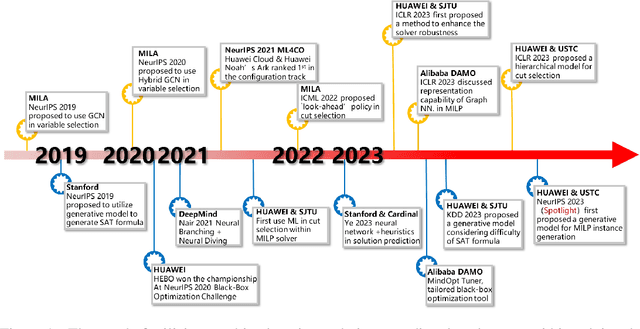
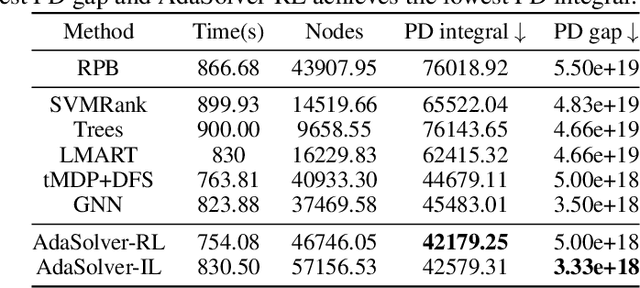


Abstract:In an era of digital ubiquity, efficient resource management and decision-making are paramount across numerous industries. To this end, we present a comprehensive study on the integration of machine learning (ML) techniques into Huawei Cloud's OptVerse AI Solver, which aims to mitigate the scarcity of real-world mathematical programming instances, and to surpass the capabilities of traditional optimization techniques. We showcase our methods for generating complex SAT and MILP instances utilizing generative models that mirror multifaceted structures of real-world problem. Furthermore, we introduce a training framework leveraging augmentation policies to maintain solvers' utility in dynamic environments. Besides the data generation and augmentation, our proposed approaches also include novel ML-driven policies for personalized solver strategies, with an emphasis on applications like graph convolutional networks for initial basis selection and reinforcement learning for advanced presolving and cut selection. Additionally, we detail the incorporation of state-of-the-art parameter tuning algorithms which markedly elevate solver performance. Compared with traditional solvers such as Cplex and SCIP, our ML-augmented OptVerse AI Solver demonstrates superior speed and precision across both established benchmarks and real-world scenarios, reinforcing the practical imperative and effectiveness of machine learning techniques in mathematical programming solvers.
Randomly Projected Convex Clustering Model: Motivation, Realization, and Cluster Recovery Guarantees
Mar 29, 2023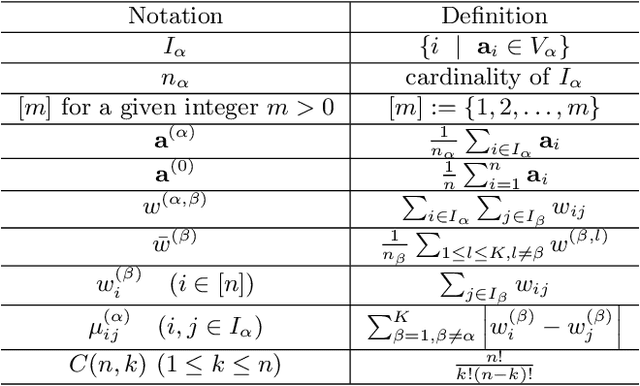
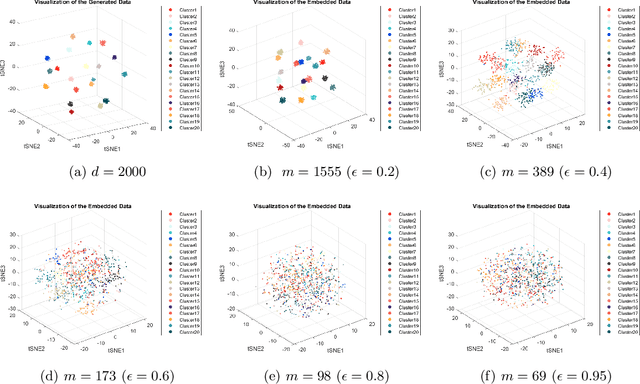

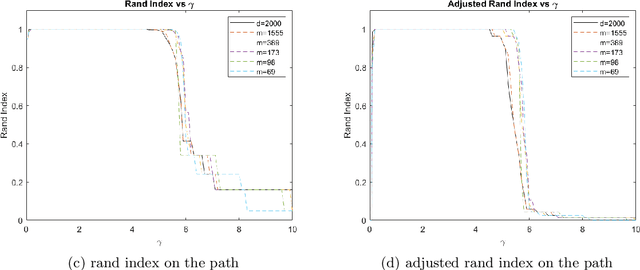
Abstract:In this paper, we propose a randomly projected convex clustering model for clustering a collection of $n$ high dimensional data points in $\mathbb{R}^d$ with $K$ hidden clusters. Compared to the convex clustering model for clustering original data with dimension $d$, we prove that, under some mild conditions, the perfect recovery of the cluster membership assignments of the convex clustering model, if exists, can be preserved by the randomly projected convex clustering model with embedding dimension $m = O(\epsilon^{-2}\log(n))$, where $0 < \epsilon < 1$ is some given parameter. We further prove that the embedding dimension can be improved to be $O(\epsilon^{-2}\log(K))$, which is independent of the number of data points. Extensive numerical experiment results will be presented in this paper to demonstrate the robustness and superior performance of the randomly projected convex clustering model. The numerical results presented in this paper also demonstrate that the randomly projected convex clustering model can outperform the randomly projected K-means model in practice.
Beyond ADMM: A Unified Client-variance-reduced Adaptive Federated Learning Framework
Dec 03, 2022



Abstract:As a novel distributed learning paradigm, federated learning (FL) faces serious challenges in dealing with massive clients with heterogeneous data distribution and computation and communication resources. Various client-variance-reduction schemes and client sampling strategies have been respectively introduced to improve the robustness of FL. Among others, primal-dual algorithms such as the alternating direction of method multipliers (ADMM) have been found being resilient to data distribution and outperform most of the primal-only FL algorithms. However, the reason behind remains a mystery still. In this paper, we firstly reveal the fact that the federated ADMM is essentially a client-variance-reduced algorithm. While this explains the inherent robustness of federated ADMM, the vanilla version of it lacks the ability to be adaptive to the degree of client heterogeneity. Besides, the global model at the server under client sampling is biased which slows down the practical convergence. To go beyond ADMM, we propose a novel primal-dual FL algorithm, termed FedVRA, that allows one to adaptively control the variance-reduction level and biasness of the global model. In addition, FedVRA unifies several representative FL algorithms in the sense that they are either special instances of FedVRA or are close to it. Extensions of FedVRA to semi/un-supervised learning are also presented. Experiments based on (semi-)supervised image classification tasks demonstrate superiority of FedVRA over the existing schemes in learning scenarios with massive heterogeneous clients and client sampling.
Learning Graph Laplacian with MCP
Oct 22, 2020



Abstract:Motivated by the observation that the ability of the $\ell_1$ norm in promoting sparsity in graphical models with Laplacian constraints is much weakened, this paper proposes to learn graph Laplacian with a non-convex penalty: minimax concave penalty (MCP). For solving the MCP penalized graphical model, we design an inexact proximal difference-of-convex algorithm (DCA) and prove its convergence to critical points. We note that each subproblem of the proximal DCA enjoys the nice property that the objective function in its dual problem is continuously differentiable with a semismooth gradient. Therefore, we apply an efficient semismooth Newton method to subproblems of the proximal DCA. Numerical experiments on various synthetic and real data sets demonstrate the effectiveness of the non-convex penalty MCP in promoting sparsity. Compared with the state-of-the-art method \cite[Algorithm~1]{ying2020does}, our method is demonstrated to be more efficient and reliable for learning graph Laplacian with MCP.
Estimation of sparse Gaussian graphical models with hidden clustering structure
Apr 17, 2020



Abstract:Estimation of Gaussian graphical models is important in natural science when modeling the statistical relationships between variables in the form of a graph. The sparsity and clustering structure of the concentration matrix is enforced to reduce model complexity and describe inherent regularities. We propose a model to estimate the sparse Gaussian graphical models with hidden clustering structure, which also allows additional linear constraints to be imposed on the concentration matrix. We design an efficient two-phase algorithm for solving the proposed model. We develop a symmetric Gauss-Seidel based alternating direction method of the multipliers (sGS-ADMM) to generate an initial point to warm-start the second phase algorithm, which is a proximal augmented Lagrangian method (pALM), to get a solution with high accuracy. Numerical experiments on both synthetic data and real data demonstrate the good performance of our model, as well as the efficiency and robustness of our proposed algorithm.
 Add to Chrome
Add to Chrome Add to Firefox
Add to Firefox Add to Edge
Add to Edge